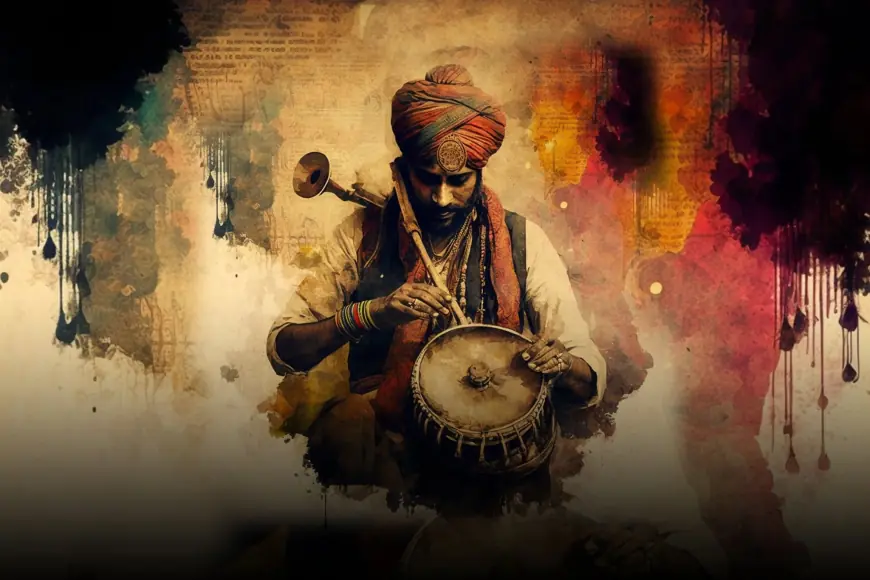Exploring the Evolution of the Hindi Music Industry
The Hindi music industry is one of the most celebrated cultural phenomena in the world.

The Hindi music industry is one of the most celebrated cultural phenomena in the world. Rooted in India’s rich history and diverse culture, this industry has transcended borders, uniting people through its emotive storytelling and melodious rhythms. With Bollywood as its backbone, Hindi music has become synonymous with Indian identity, representing a blend of traditional and contemporary artistry. This article explores the journey of the Hindi music industry, its major milestones, and its impact on audiences both in India and abroad.
A Historical Perspective on Hindi Music
The roots of Hindi music can be traced back to the inception of Indian cinema in the early 20th century. Films like Alam Ara introduced the concept of integrating music into storytelling, transforming movies into musical extravaganzas. These soundtracks were not mere background scores; they became integral to the narrative, often expressing emotions and themes more powerfully than dialogues. This marked the beginning of an era where film music dominated the entertainment landscape.
During the golden age of Hindi cinema in the 1950s and 1960s, legendary composers like S.D. Burman, Naushad, and Shankar-Jaikishan revolutionized the industry. Their innovative compositions blended Indian classical music with Western influences, creating timeless melodies. Singers like Lata Mangeshkar and Kishore Kumar lent their voices to these songs, etching their names in the annals of history.
The Expansion of Musical Genres
As the industry evolved, so did its musical offerings. The 1980s and 1990s saw the rise of disco and pop music, spearheaded by artists like Bappi Lahiri and Alisha Chinai. Bollywood soundtracks embraced a more commercial and energetic approach, catering to a younger audience. This period also witnessed the introduction of remixes, which brought older classics back into the spotlight with a modern twist.
In recent years, the Hindi music industry has diversified further, embracing a wide array of genres. From soulful Sufi tracks and Punjabi beats to indie pop and electronic dance music (EDM), there is something for every listener. The emergence of independent artists and online platforms has provided a much-needed space for non-Bollywood music to thrive.
The Role of Technology in Shaping the Industry
Technology has been a game-changer for the Hindi music industry. With the advent of digital platforms like YouTube, Spotify, and Apple Music, artists can now reach global audiences at the click of a button. Streaming services have democratized music consumption, allowing listeners to explore a plethora of tracks from different genres and languages.
Music production has also benefited immensely from technological advancements. Sophisticated software and tools have enabled composers to experiment with sounds, creating intricate and innovative compositions. Additionally, the rise of social media has given artists a platform to promote their work, engage with fans, and collaborate with other musicians across the globe.
Cultural Impact and Global Recognition
The Hindi music industry has had a profound impact on Indian culture, serving as a medium for storytelling, emotional expression, and social commentary. Songs often reflect societal values, aspirations, and challenges, making them relatable to audiences of all ages.
Internationally, Hindi music has gained immense popularity, particularly in countries with significant Indian diasporas. Bollywood songs are now featured in global playlists, and Indian artists have collaborated with international icons like Pitbull, Akon, and DJ Snake. This cross-cultural exchange has introduced Indian music to new audiences, further cementing its place on the world stage.
Challenges Faced by the Industry
Despite its success, the Hindi music industry is not without challenges. Piracy remains a significant issue, affecting the revenue of artists and production houses. Additionally, the over-reliance on remixes has raised concerns about originality and creativity. Critics argue that the industry must strike a balance between commercial viability and artistic integrity to maintain its relevance.
Another pressing issue is the lack of proper recognition and remuneration for independent artists. While Bollywood continues to dominate, indie musicians often struggle to gain visibility and financial stability. This disparity highlights the need for a more inclusive and equitable ecosystem.
The Road Ahead: Future of Hindi Music
Looking forward, the Hindi music industry is poised for further growth and innovation. Emerging technologies like artificial intelligence and virtual reality are expected to revolutionize music production and consumption. These advancements could open up new avenues for storytelling, making music a more immersive experience.
Moreover, as audiences become more diverse and discerning, the demand for fresh and authentic content will likely rise. This presents an opportunity for independent artists and niche genres to flourish. By embracing its heritage while exploring new horizons, the Hindi music industry can continue to captivate and inspire generations to come.
Conclusion: A Cultural Treasure Worth Celebrating
The Hindi music industry is more than just an entertainment medium—it is a reflection of India’s soul. Its melodies have the power to evoke deep emotions, tell compelling stories, and bridge cultural divides. As it navigates the challenges of a rapidly changing world, this industry remains a beacon of creativity and resilience. Whether through classic ballads or chart-topping hits, Hindi music has and will continue to leave an indelible mark on the hearts of millions.
Related Articles:
For further reading, explore these related articles:
For additional resources on music marketing and distribution, visit DMT Records Private Limited.
What's Your Reaction?
 Like
0
Like
0
 Dislike
0
Dislike
0
 Love
0
Love
0
 Funny
0
Funny
0
 Angry
0
Angry
0
 Sad
0
Sad
0
 Wow
0
Wow
0




















































